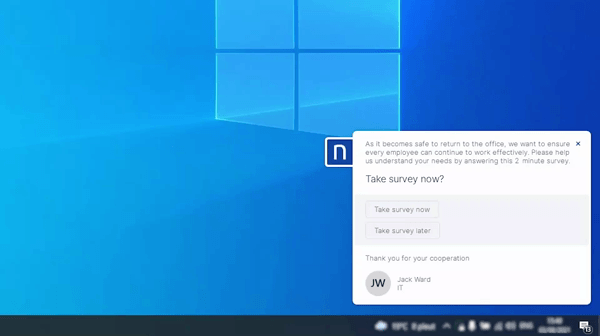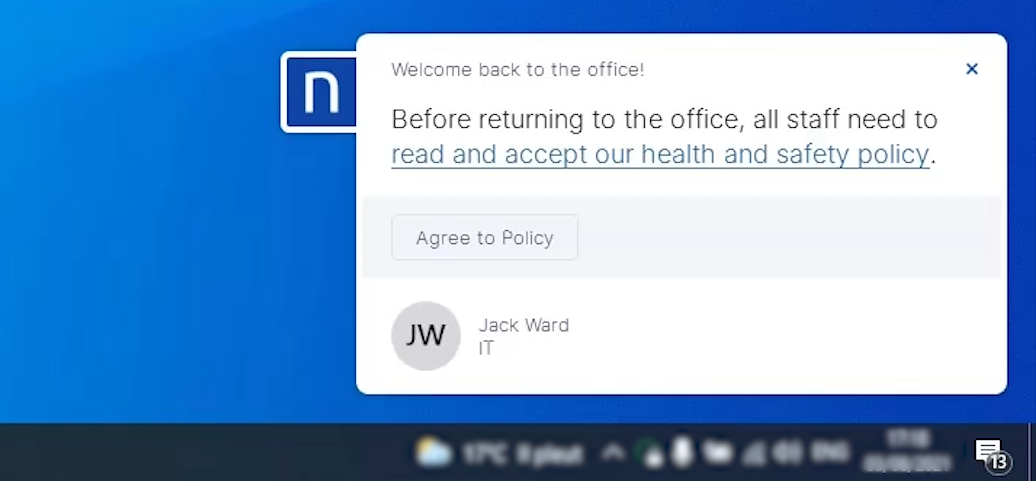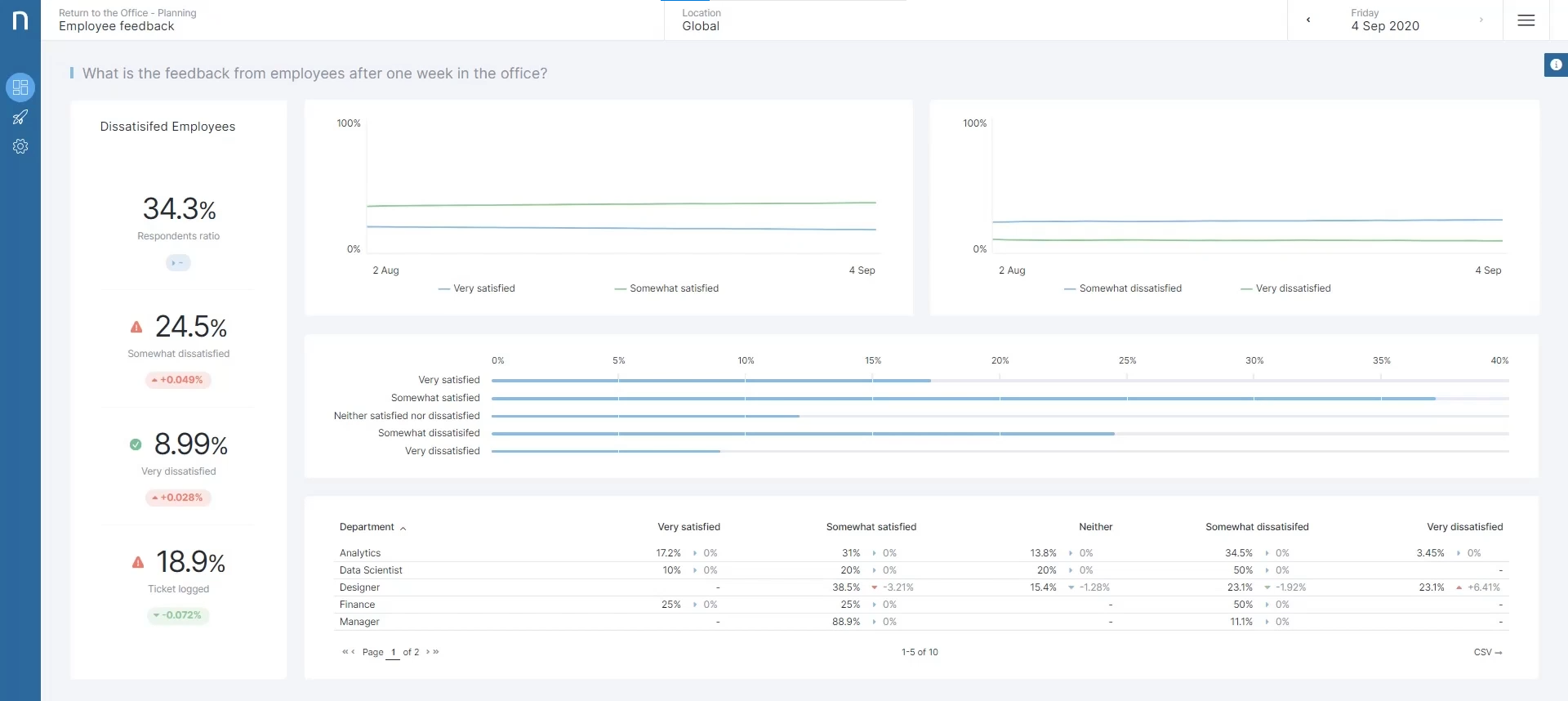18 months later, organizations around the globe are slowly but surely starting to welcome their employees back to the office – or at least thinking about it.
But this is not a “back to normal” kind of thing. Most will recognize that something’s different this time around.
Firstly, there is no clear one-size-fits-all return-to-office strategy. Although some companies are adopting fully remote or fully in-office approaches, the majority are looking at something in-between with looser hybrid and flexible working policies.
Secondly, employees now have a say in this debate. They’ve successfully tested remote working, weighing the pros and cons of their new work-life balance. With the skyrocketing post-pandemic employment turnover, companies now need to adapt to employees’ new working style preferences, not the other way around.
Lastly, employees’ expectations for a satisfactory digital experience have dramatically changed. With the lines of working style and location being blurred, new aspects of the digital workplace—such as hybrid meetings, videoconferencing tool adoption, hotdesking, security compliance… etc—will make digital employee experience management vital to any organization’s return to office strategy.
So, where does IT come into the equation?
In large organizations, IT and EUC teams are uniquely positioned to gather and correlate key technical data as well as more subjective, sentiment insight to truly understand and manage employees’ digital experience and expectations.
This allows them to effectively manage the planning, day-1, and continued support of organizations’ return to office strategy. Here’s how.
Plan and adapt based on workforce preferences
The main obstacle to a successful return-to-office strategy is lacking insight into employees’ preferences and expectations towards their future flexible workplace. Without this insight, companies cannot accurately adapt to the new future of work, leading to two overarching consequences: increased turnover from dissatisfied employees and wasted costs on unnecessary office and hardware provisioning.
IT needs to adapt to what employees want—and expect—to remain productive and avoid having them dust off the old CV the day they get back. This doesn’t mean companies have to bow down to every demand, but it does provide a key starting point to strike the right balance between corporate necessities and employee expectations.
This also leads to massive cost savings opportunities from accurate planning of office space and hardware provisioning – what’s the point of leasing an entirely new floor if your employees are only going to be coming in at 50% capacity. Or why buy hundreds of new monitors for individual workstations when hotdesking will suffice due to alternating employee presence.
It is therefore vital for IT and office management teams to take the time to send targeted and personalized engagement campaigns to survey their workforce preferences before they return to the office.

As an example, a global consulting firm assumed (by gut-feeling and online research) that around 50% of their workforce would adhere to hybrid working, with 25% fully remote and 25% mainly in-office. With that in mind, they only planned for minor changes to their office space. However, after a targeted Engage survey, they discovered that about 90% of their workforce preferred hybrid working, with 80% saying they would, ideally, only come once or twice a week.
Knowing that the number of employees who would be in-office on a given day would be much lower than expected, IT, HR and office management worked together before employees came back to reduce assigned desks, implement a new hotdesking system and expand social areas to maximize office space based on their new working style.
Ensure technical readiness of device landscape
Executing an effective return to office strategy also means being ready from a technical perspective.
For nearly 2 years, the majority of devices in large organizations have not re-connected to their office infrastructure, leaving many outdated and uncompliant. This will lead to serious security threats, as well as create employee accessibility and performance issues on their first day back.
It is crucial for IT and security teams to proactively ensure that every returning device is compliant, secure, and up to date. They can do so by launching a landscape-wide investigation to analyze key compliance factors, such as Bitlocker encryption, anti-virus status, certificate readiness, presence of VPN, Group Policies, or OS updates to count the devices not deemed “ready” to come back and apply the relevant fix before they reconnect.
This ensures support teams are not swarmed with support tickets and/or hundreds of employees showing up at IT’s door for simple, avoidable L1 fixes. IT can then focus on the more serious technical issues that might arise on day 1.

Get your employees back up to speed on day 1
OK, this is the big day. Your employees are slowly streaming into the office they haven’t seen in some months – maybe years.
But things have changed since then.
The layout might be very different to reflect new working styles, there might be new important health-related office policies that employees must validate, or there might be new hardware desktop equipment and/or videoconferencing tools they need to know about.
So how do you effectively tell employees about this essential corporate information? You can’t send an email – nobody reads those, there’s no proof of validation, not all employees will be in-office when they receive it, and not every country will have the same return to office dates.
This is where targeted engagement systems come in. For instance, IT teams can leverage Nexthink Engage’s hyper-targeted engagement and automation capabilities to schedule a tailored message that is automatically sent to any device 1 hour after they have connected to an office-specific network.
By ensuring that only employees who have physically returned to a specific office get the message, companies can guarantee a high response rate and track if employees have read and approved this critical corporate information.

Day 1 support
This engagement system is also the perfect time to ask employees if they are having an issue on their first day back. Remember how you can proactively ensure compliance to prevent your L1 support teams from getting unnecessarily overburdened? Well, this is why. Because with all the confusion of new office spaces, policies, equipment, health regulation…etc, employees are bound to have digital experience-related issues or concerns on their first day back.
A day 1 engagement message should include all the links to easily submit a ticket for a day-1 issue, allowing support to quickly resolve simple issues, escalate more serious ones, and spot trends to fix large-scale issues at once.
Measure and improve
The last step in a return to office strategy is to measure its success and quickly detect areas of improvement. It is also the best way to get a quick and accurate answer to report to management about the current employee satisfaction regarding the new office space/provisioning.
Leveraging the same hyper-targeted and high-response engagement campaign, you can ask employees what they think about their new office space and what might need improvement.
Because, like anything, you can’t improve what you can’t measure.
Having that combination of employee sentiment and deeper technical insight over returning employees’ experience is uniquely beneficial when it comes to monitoring and reporting on the success of your return-to-office strategy

Summary
There is no magic formula for a successful return-to-office strategy – every corporate culture is different. However, IT teams are perfectly positioned to combine both sentiment and technical data to plan and execute a strategy that fits their specific corporate needs and meets employee expectations.
With the right solution, companies can expertly save on unnecessary costs, avoid day-1 support overheads, and prevent post-pandemic turnover. That’s why effective digital employee experience management is vital, and IT is at the center of it.
Library Pack: Return to the Office – Planning and Readiness
Although everything mentioned above can be done with your Nexthink Experience platform, we made sure to also package all these capabilities into a content pack, available today on the Nexthink Library – a collection of out-of-the-box platform extensions to meet immediate market and customer needs.
Explore the Library Packs here:
· Return to the Office – Planning
· Return to the Office – Readiness
Not a customer yet? Schedule a short demo to see how we can help you
Related posts:
- The Ultimate List of Digital Employee Experience Job Titles
- 1 Year Later: Key IT Lessons from Remote Working
- Powering the Digital Employee Experience for Remote Workers
- The DEX Show | Podcast #11 – Law and Automation w/ Slater & Gordon